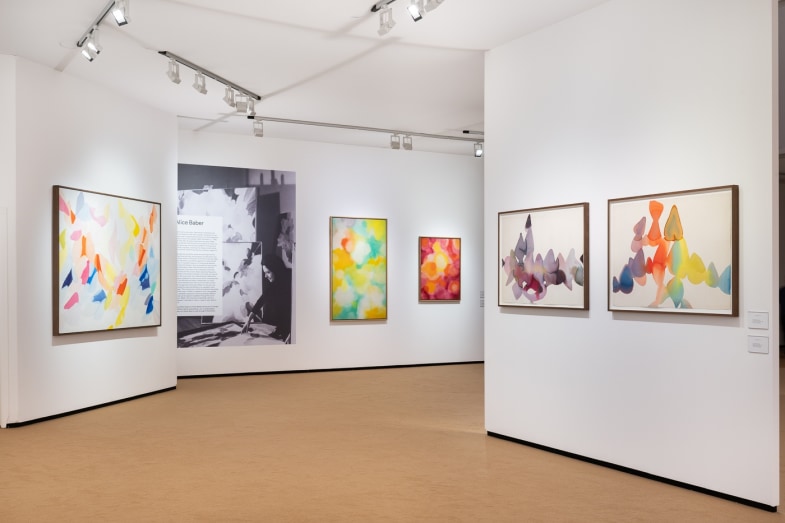'I don't like to mix colour.' Now there is a sentence one does not expect to hear from a painter. Certainly not one whose work is characterised by such a rich and imaginative palette as that of Alice Baber (1928, Charleston, IL - 1982, New York, NY). Brutally honest about her ways, Baber saw herself first and foremost as an explorer of colour, for whom paint was a living thing capable of moving across surfaces unguided, morphing into shapes and activating other colours, whether layered above, below or against it.
Although she started her career by exploring the limits of figurative painting, relying heavily on observation and working primarily in the genre of still life, by the late 1950s Baber adopted an northodo approach to painting that set her on a parallel trajectory to the growing Abstract Expressionist tendency that surrounded her both socially and stylistically in New York and Paris (two cities she called home.
Like many of her colleagues and friends associated with this school, Baber abandoned figuration gradually in the postwar decades until hardly any trace of it was left in her work. Her understanding of abstraction, however, differed from that of most of her contemporaries, like Joan Mitchell and Helen Frankenthaler, for whom the word 'expressionism' had much to do with a certain gestural approach of the hand. Baber, for her part, was motivated by what she defined as an insatiable 'colour hunger'. This unusual term, which soon became associated with her work, is hardly a metaphoric one. It exemplifies her synesthetic approach to painting whereby different senses can be teased or awakened through the use of colour. When I first conceive of a painting', she once explained, 'I must feel it, I hear it, I taste it, and I want to eat it.

